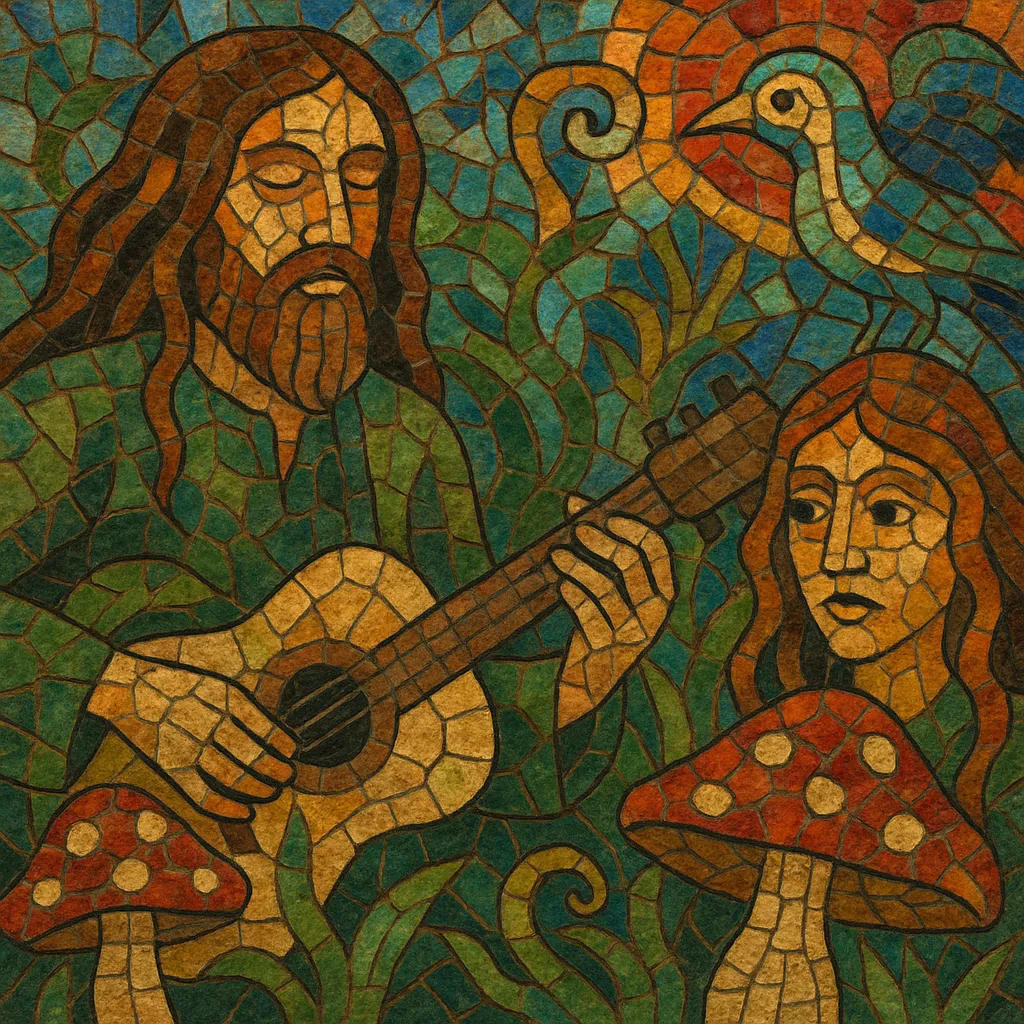
Freak folk is a 2000s revival and mutation of psychedelic and traditional folk that embraces eccentric vocals, surreal lyrics, and homespun, experimental arrangements. It blends fingerpicked acoustics and hand percussion with harps, harmoniums, toy instruments, and found sounds, often recorded in lo‑fi, intimate settings.
Aesthetically, it is earthy yet otherworldly: pastoral melodies, drones, and modal harmonies coexist with whimsical, childlike timbres and mystical imagery. The scene is closely associated with the New Weird America movement, valuing communal creativity, DIY production, and a porous boundary between folk tradition and avant‑garde exploration.
Freak folk coalesced in the early 2000s in the United States, drawing deeply from 1960s–70s psychedelic folk and the rustic minimalism of American primitive guitar. Artists embraced DIY recording, communal living, and a back‑to‑the‑land ethos while absorbing avant‑folk and free‑folk’s improvisatory spirit. Publications like The Wire and Arthur Magazine popularized the “New Weird America” tag, situating the music as a contemporary, experimental twist on older folk mysticism.
Between 2003 and 2006, a wave of albums by Devendra Banhart, Joanna Newsom, Vetiver, Espers, and Six Organs of Admittance brought the sound into indie awareness. Labels and collectives (e.g., Drag City, Young God, Paw Tracks) and curated compilations like “The Golden Apples of the Sun” (2004) helped define the aesthetic: lo‑fi intimacy, odd tunings and modes, drones, hand percussion, and idiosyncratic vocals. Revivals and collaborations with elders (e.g., Vashti Bunyan’s return) linked the scene to 60s acid folk lineage.
As the decade progressed, freak folk intersected with psych, noise, chamber instrumentation, and indie pop. Some artists moved toward lusher, orchestral arrangements; others leaned into improvisation and ritualistic drones. The scene’s communal shows, house recordings, and experimental openness fostered a broad, decentralized network rather than a single geographic hub.
By the 2010s, its influence spread into indie folk, chamber folk, lo‑fi indie, and hypnagogic pop, normalizing unconventional instrumentation, intimate production, and surreal lyricism in wider indie contexts. While less a strict genre than a porous aesthetic, freak folk’s blend of pastoral warmth and experimental curiosity remains a touchstone for artists seeking a mystical, handcrafted sound.
Start with acoustic guitar (fingerpicked patterns), add hand percussion (shakers, frame drums), and consider distinctive timbres: harp, harmonium, flute/recorders, toy keyboards, bells, or found objects. Drones from harmonium, bowed strings, or sustained guitar notes help create a trance‑pastoral bed.
Favor modal harmony (Dorian, Mixolydian, Aeolian) and open tunings for ringing overtones. Use pedal tones and drones to stabilize wandering melodies. Allow ornamented, non‑classical vocal phrasing—breathy, childlike, or incantatory—to become a focal texture.
Keep grooves organic and human; let tempos ebb and flow. Mix simple pulses with additive patterns or off‑kilter accents. Song forms can be vignette‑like, repetitive, or evolving episodes rather than strict verse‑chorus structures.
Record in intimate, imperfect spaces. Embrace tape hiss, room reverb, and close miking. Layer acoustic textures, small choirs, or hand‑played overdubs; avoid over‑quantization. Field recordings (wind, birds, creaks) can sit quietly under the mix.
Write surreal, nature‑steeped imagery—mythic creatures, forests, dreams, childhood memories—mixed with tender, personal reflections. Keep language tactile and evocative rather than literal.

